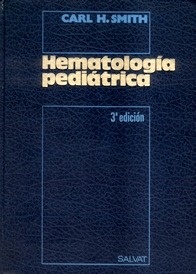Reseña o resumen
Identifies and shares best practices for non-clinical vascular infusion
Relates physico-chemical and physiological principles to vascular infusion delivery
Comments at various points throughout each chapter on scientific principles related to vascular infusion delivery
Presents modern practices and procedures in line with up-to-date equipment development
Provides guidance on choices for the most acceptable methodologies from an animal welfare perspective
Offers recommendations for in-life assessments in order to monitor the success or problems with the vascular infusion delivery
Makes comparisons with human data in many areas
Summary
Intravenous infusion is a necessary mode of delivery for many pharmaceuticals currently on the market or undergoing clinical trials. The technique of prolonged intravenous delivery in conscious, free-moving animal models has broadened the opportunity to study and evaluate the safety and efficacy of these therapeutic products. For the first time, the collective sciences involved in the understanding of this mode of drug delivery are brought together in one publication.
Non-Clinical Vascular Infusion Technology, Volume I: The Science covers the scientific principles behind the delivery systems, from both physical and physiological standpoints. The book addresses body fluid dynamics, describes the scientific processes necessary to understand the various aspects of the physico-chemical issues relating to vascular infusion delivery, and discusses vascular infusion dynamics. It also considers all the essential elements of the preparation of a formulation intended for vascular delivery as well as assessment of compatibility of the formulation with the dosing apparatus. This volume, along with Volume II: The Techniques, provides a foundation of knowledge on infusion technology and its importance for safe clinical use of substances via this route of delivery.
Features
Identifies and shares best practices for non-clinical vascular infusion
Presents modern practices and procedures in line with up-to-date equipment development
Offers recommendations for in-life assessments in order to monitor the success or problems with the vascular infusion delivery
Makes comparisons with human data in many areas
Table of Contents
Body Fluid Dynamics
Introduction
Composition and units of measurement
Compartmentalization and Distribution
Movement between Compartments/Exchange
Body Fluid Homeostasis
Summary
References
Physico-Chemical Factors
Introduction
Osmolality
Acid-Base Balance
Viscosity
Surface Tension
Diffusion
Summary of Infusion Forces
References
Vascular Infusion Dynamics
Essential physiology
Intravenous Delivery Rates and Volumes
References
Formulation Considerations, Co-author: Kevin Sooben
Introduction
Formulation selection strategy
Study design and species/strain
The properties of the compound
Strategies for dealing with poor solubility
Unwanted formulation effects
Excipient toxicity
Strategies for dealing with injection site reactions and haemolysis
Strategies for dealing with poor stability
Sterility
Conclusion
References
Prestudy analytical assessments:
Equipment compatibility, Co-author: James Baker
Introduction
Stability of the formulation with the formulation storage vessel
Compatibility
Choice of material
References
Haemocompatibility, Co-author: Sophie Hill
Introduction
Objectives.
Methods of assessing haemocompatibility
Discussion
Conclusion
References
Annex: Common excipients and vehicles

